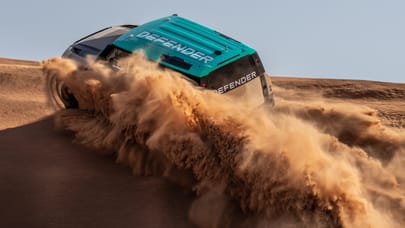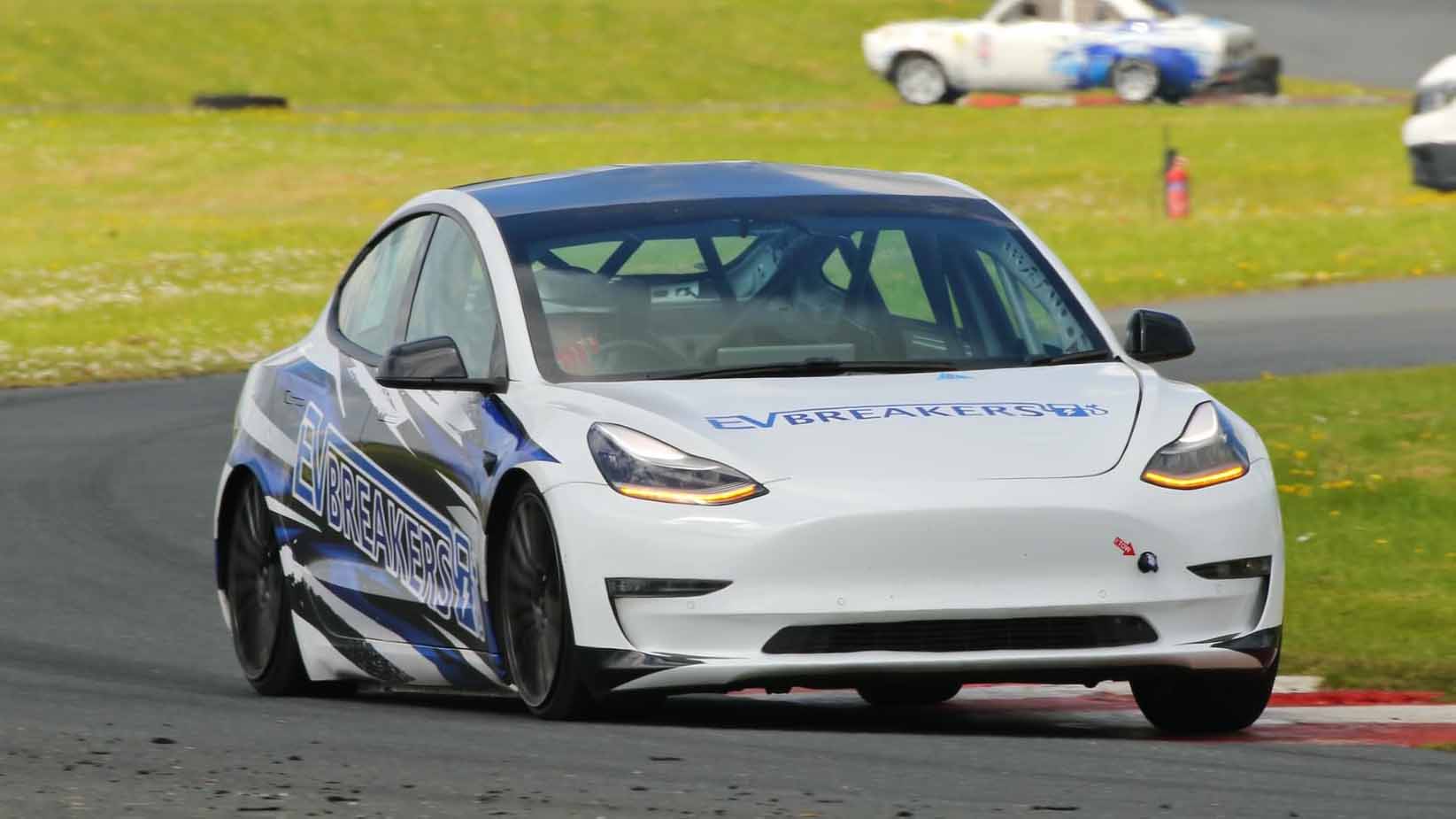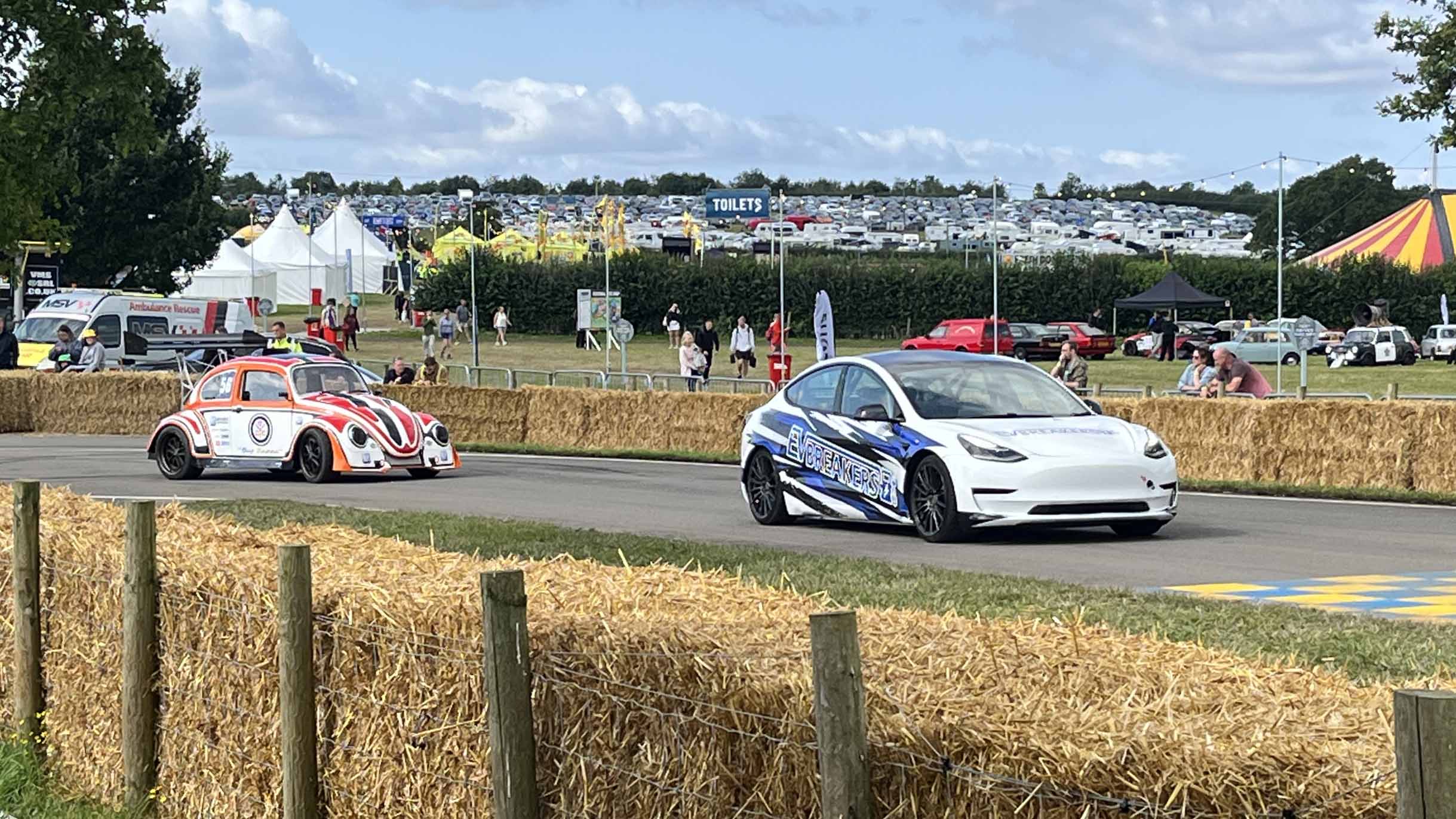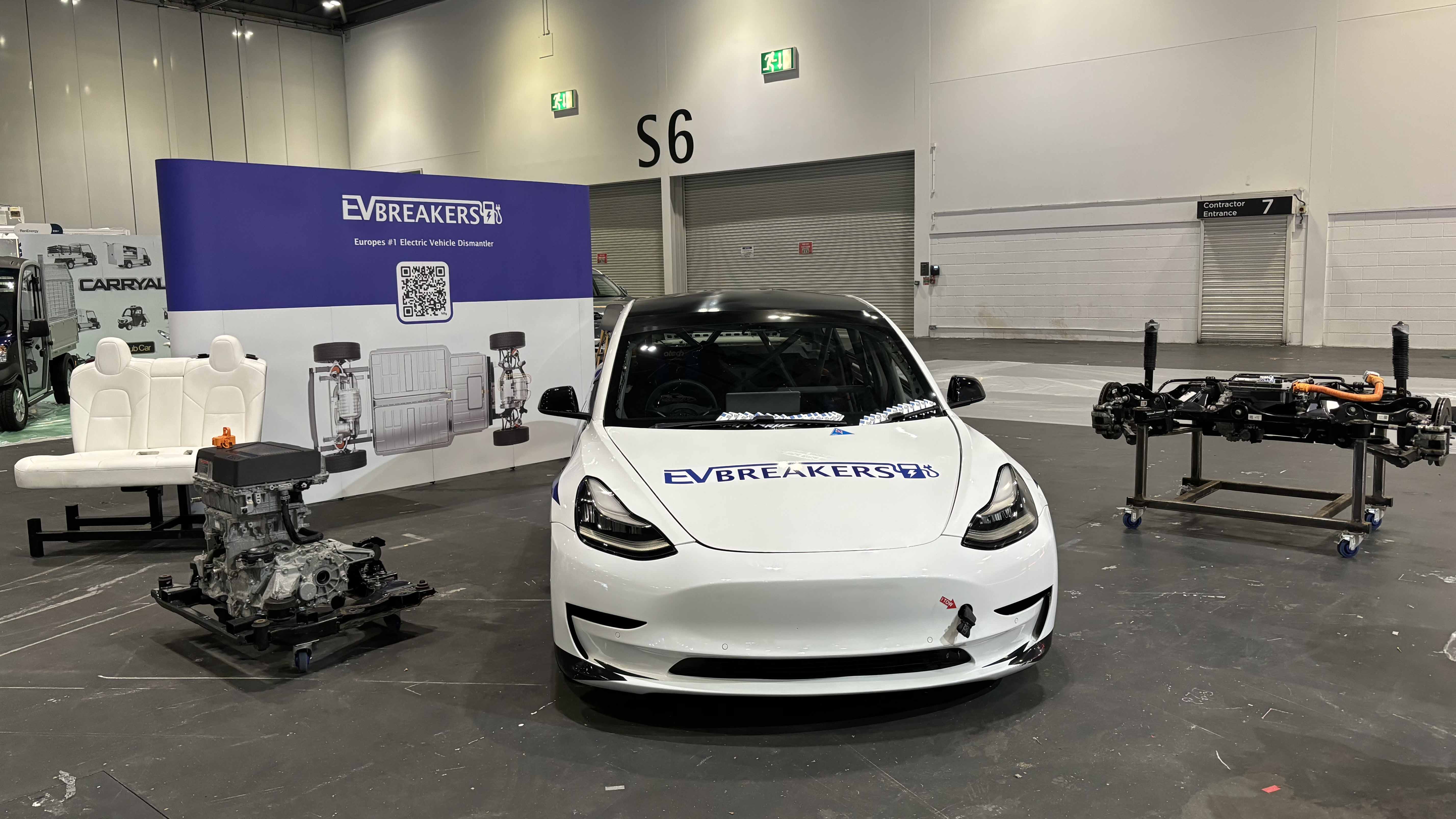
Just how fast is a stripped-out Tesla Model 3 Performance on track?
Lose 100kg, add coilover suspension and you’re not far off a modern supercar, apparently
Electric cars and track days still sounds like a strange match-up. But what if you were to take a Tesla Model 3 Performance - by no means a slouch as is - shed some weight and throw in a few track-focused goodies? It’s precisely what EV Breakers, a small Northern Irish firm which strips electric cars for parts, has done.
What’s more, the team have already participated in casual track days with it and says the car is no more than a second or two off the pace of modern, purpose-built supercars. So, what’s the process been like, and what do they hope will come out of the project? We spoke to Ciaran Murphy, one of EV Breakers’ chief mechanics, to find out more.
TG: Tell us about the changes you’ve made
CM: We’ve removed around 100kg from it, added a roll cage, hydraulic handbrake and coilover suspension for better stability, and… that’s about it. Otherwise, it’s basically a standard Model 3 Performance with a unique livery.
Were you surprised with the results on track?
We’ve already got a bit of background experience in rallying, but we thought it would be simpler to focus this project on tarmac for now. When we first got it on the track, we were pleasantly surprised to see we weren’t that far off the pace of professionally-built racing cars that had a lot of time, money and effort put into them. Considering we’re a small firm without a crazy budget, we’re happy so far. It just goes to show how easy it is to turn EVs into track cars.
Any teething issues to report?
The main thing is traction. We don’t have regenerative braking, and the issue with that in a car this heavy is you’re relying on unassisted brakes; ones that aren’t built to be solely relied upon under extreme pressure, like on a track. We’re currently figuring out a way to get around this, but once we do, it could shave a big chunk off our lap times.
Otherwise, where do you reckon extra gains could come from?
Predominantly more weight reduction. There’s still sound deadening in it for instance, and if you see most rally cars, this is something that’s removed altogether.
We also know of some companies Stateside that can squeeze extra power out of the motors by reworking the software. You can also now get aftermarket conversions that extract more power from the controllers too. These are the sort of things we’ll look into doing once we’ve wrapped up initial testing of the stock car.
What’s the ultimate goal of this project?
We’d love to inch it towards rallying, to show people that it is possible with an EV. But more than that, we want to help promote the message that EVs can be fun and that you can still take them on track and enjoy the driving experience. These cars, with all their power and torque, are getting cheaper by the day, so something like our Model 3 Performance represents real bang for buck right now.
You also mentioned a hydraulic handbrake. Just how strange is it to yank that in an electric car?
Very strange, given most EVs have electronic handbrakes. It’s such an odd sensation doing a handbrake turn with this car, but we’ve tested it in our yard a few times, and it most certainly does work.
Images: Phil Stewart Photography
Top Gear
Newsletter
Thank you for subscribing to our newsletter. Look out for your regular round-up of news, reviews and offers in your inbox.
Get all the latest news, reviews and exclusives, direct to your inbox.
Trending this week
- Car Review
BMW 1 Series
- Top Gear's Top 9
Nine dreadful bits of 'homeware' made by carmakers










